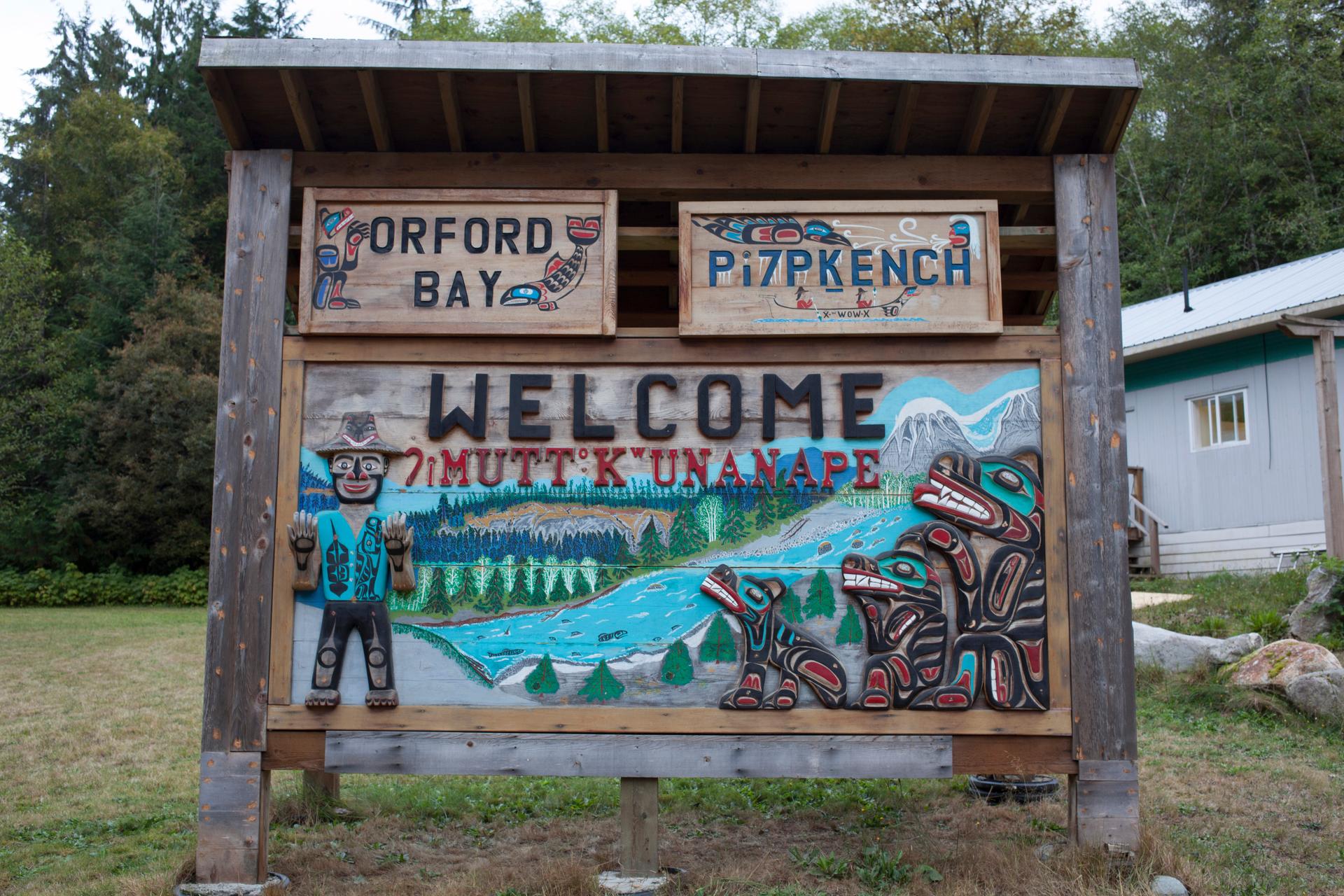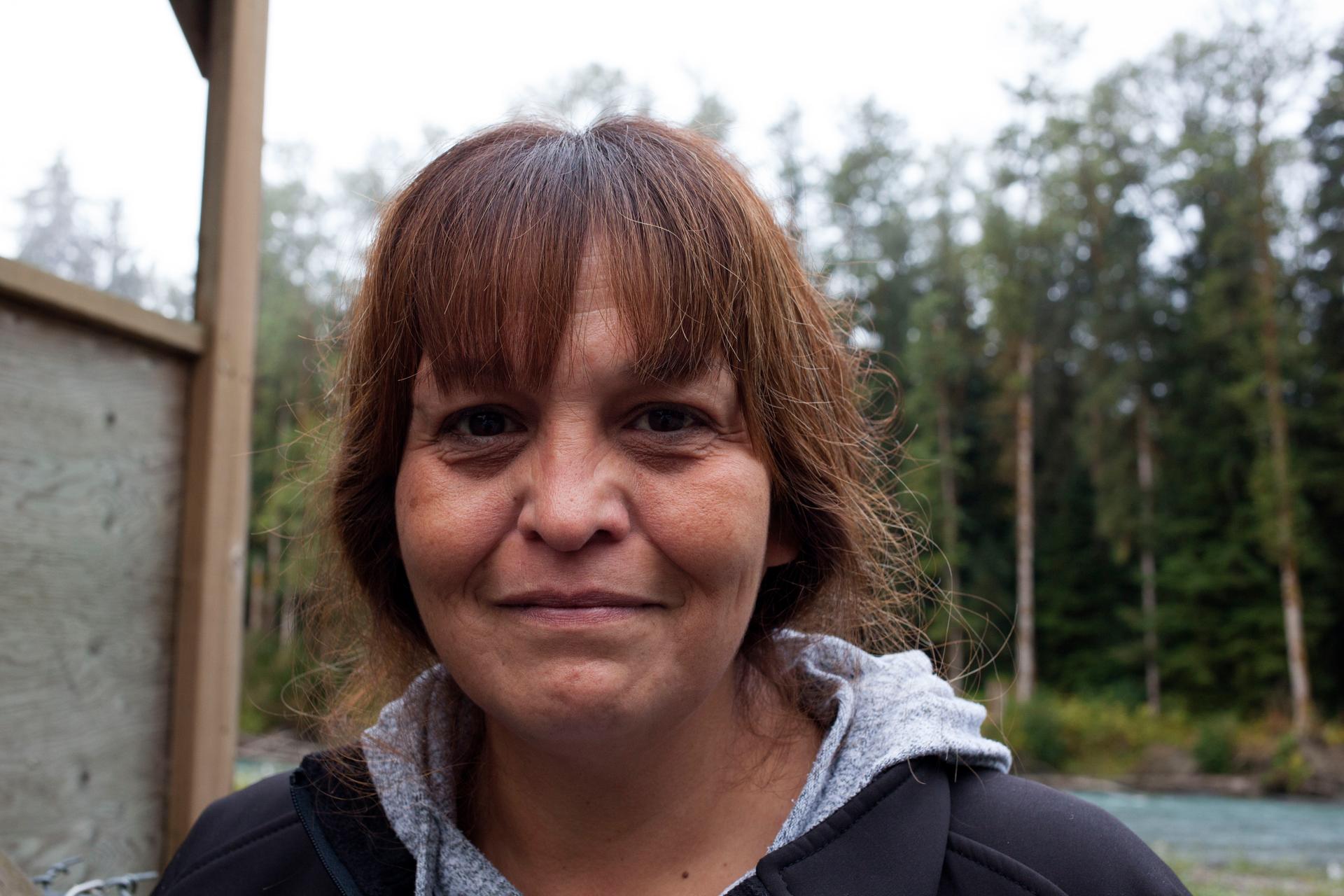British Columbia has a flourishing grizzly bear tourism industry
A grizzly feeds on dead salmon in a river in British Columbia's Great Bear Rainforest. Hunting grizzlies was banned throughout the vast region late last year.
On an early evening in British Columbia’s Great Bear Rainforest, Shawn O’Connor, the general manager of Homalco Wildlife Tours, ushered a group of tourists off a bus and toward a wildlife viewing tower on the edge of a river.
The group was there for what they might see, but at first, they were overwhelmed by what they smelled. The banks of the river were littered with rotting salmon carcasses.
Salmon swim up this river every fall, spawn in its gravel beds and then die. There were hundreds along the shore, torn apart and in varying states of decay. Prime grizzly territory.
“The bears will just go by and they’ll just eat the skin, eat the brains, eat the roes, and they’ll leave all the flesh,” O’Connor explained. “That’s what that smell is. You didn’t step in anything.”
And sure enough, below and by the tower, a huge grizzly stood on his hind legs.
Doing their best to ignore the smell, the group watched the bear from the security of the tower, snapping pictures and speaking in whispers so as not to scare him off.
It didn't take long before the bear sniffed out the visitors and ran off into the darkness, seeking his own safety.
Until recently, the grizzlies here had good reason to be afraid of people — this vast tract of pristine rainforest encompassing most of the western coast of Canada and the islands just off it was prime grizzly hunting territory. But as of the end of November 2017, the British Columbia provincial government has banned grizzly hunting in the area. Now, shooting bears with cameras is the only kind of grizzly “hunting” allowed.
The ban was a big victory for local First Nations who have long opposed the grizzly hunt on the territories that have been their home for millennia.
“People a long time ago had to learn to live with bears and share the same estuaries, share the rivers,” says Doug Neasloss, chief councilor of the Kitasoo/Xai’xais. “So we were taught very young to have a respect for these bears.”
Related: The fight is on over grizzly hunting in the Great Bear Rainforest
Neasloss says his people used to hunt grizzlies for food but stopped doing that a century ago. Today, in place of grizzly hunting his nation is working to build a tourism economy that it says honors the bears, benefits the First Nations and takes their cultural heritage into account.

Ecotourism companies run by First Nations like the Kitasoo/Xai’xais and Homalco Nation already bring in about 12 times more money than the trophy hunt, and tourism has become the second largest employer in the Kitasoo/Xai’xais community of Klemtu. Homalco Nation’s bear viewing tours are booked up a year in advance without any advertising.
The fledgling tourism industry has also helped local young people reconnect with their land, songs and dances. “There’s a lot of sense of pride that comes from that,” Neasloss says.
Former Homalco chief MaryAnn Enevoldsen has been deeply involved in trying to rebuild that sense of connection and pride, seizing whatever opportunities present themselves — not always involving tourism. She says a friend recently brought her the paws of a grizzly killed by another bear during mating season.
“He remembered me telling him that I’m going to be bringing all my traditions and cultures back, so he took the paws for me,” Enevoldsen says.
She kept the paws on ice and asked all the local elders to bring their young grandchildren to a special ceremony. The community gathered for a potluck lunch and drumming songs, then Enevoldsen rubbed the bear paws on the children’s hands — so they would harvest berries quickly, like a bear — and on their feet, so they would move quietly through the forest.
Enevoldsen says the elders were in tears. “They said, ‘I can’t believe this is happening in our community again.’”

But Enevoldsen and other First Nations leaders here say a resurgent local culture and successful ecotourism can’t co-exist with hunting.
That’s why some First Nations are now broadening their fight beyond grizzlies. There are other bears here, too — a population of black bears with a recessive gene that sometimes produces rare, all-white offspring known as Spirit Bears. The Spirit Bears are also protected from hunting, but the black bears that might carry the recessive genes aren’t.
Neasloss says the black bears should be next to be protected. Local culture and ecotourism are “the future of our communities,” he says, “and … the future of the Great Bear Rainforest.”
The morning after watching the grizzly in the salmon stream, the tour group ventured out again. The huge bears appeared everywhere in the thin morning light — crossing a road, eating fish in a river, lumbering into a silver platoon of salmon still heading upriver.
MaryAnn Enevoldsen looked on as the group snapped photos, pleased with the growing bear-viewing business and the successful end of the fight against grizzly hunting.
“It just reassures me that we’re taking the right steps to look after the resources,” she said. “We’ve got to make sure that these bears are here for generations to come.”
Related: The Great Bear Rainforest is a model for how to save trees
